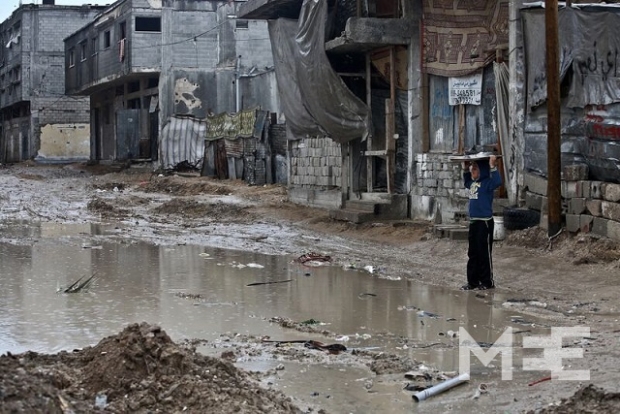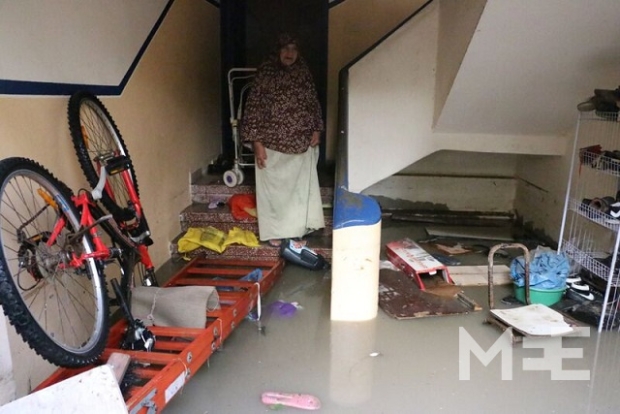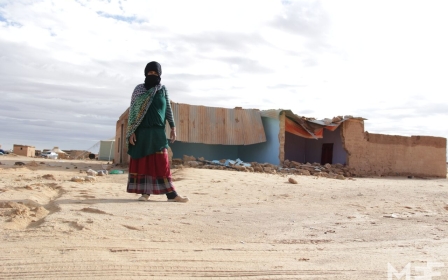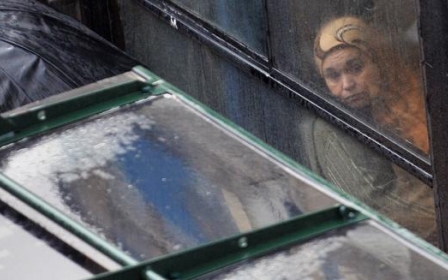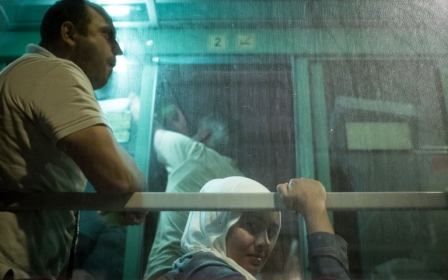Torrential rains pound Gaza, causing heavy flooding
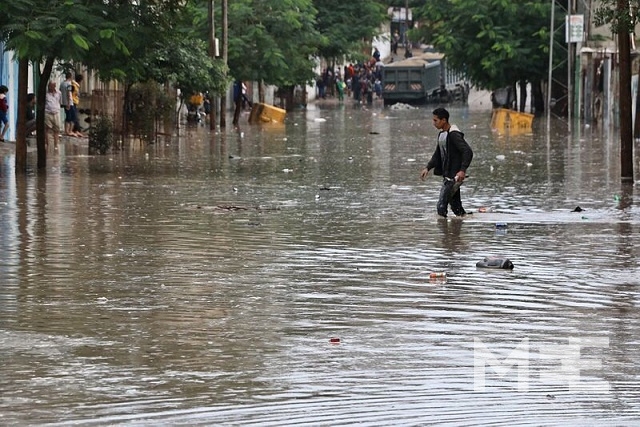
KHAN YOUNIS, Occupied Palestinian Territories - Eleven-year-old Shyamaa Khairddin usually walks home from school with her friend Yasmin. She follows the same route every day, but on Monday she was left stranded by especially heavy rains that have pelted Gaza.
“I left in the morning; it was dry - there was no water. Now, I can’t return home,” said Khairddin, holding her shoes and schoolbag above her head in an attempt to keep them dry despite the downpour.
Khairddin, who lives in Khan Younis in southern Gaza, says she usually feels happy at the sight of rain, which she can bring a welcome reprieve, but the latest rains were different. As the storm rushed in, Gaza’s fragile infrastructure buckled and the heavy rain quickly began to flood the city streets.
Heavy rains have pounded Gaza for the last two years, and many residents say they have almost grown accustomed to them, but the situation seems to be deteriorating. It’s not just the roads but also the houses in Khan Younis that have been flooded by the latest heavy rainfall. Cars were left stranded in the middle of the street and sewage systems are overwhelmed.
As night fell, rescue teams were still rushing around in an attempt to help those worst hit by the storm. But with few resources, the clean-up process is slow. Flooded-out cars that cannot be started are difficult to move, and equipment used to pump out water is inadequate. To ease the crisis, the municipality brought two trucks of sand to keep the water from reaching homes where families are stranded and provided a temporary path for people to walk above water-level, but no one knows what will happen next.
“Just a couple of hours of rain, and look what happens,” said Abu Rashad, a 59-year-old Khan Younis resident.
“Not only are we punished by constant war, but we are punished by nature, it seems,” he told Middle East Eye.
Another resident, who did not want to give his name, told MEE that his home had been flooded and that there was now about a metre of water on the bottom floor. The man tried to rescue what he could, but the damage was widespread. He said it wasn’t the first time his home had been ravaged.
“Every year, and nothing is done about it,” he said, while blaming the municipality for not providing better-built infrastructure.
Scenes like these were seen across other parts of Gaza and the wider Middle East.
In Israel, the West Bank, parts of Egypt and Jordan, heavy downpours was reported, with homes, schools and hospitals flooded.
However, the situation is often exasperated in war-ravaged Gaza, where people have fewer resources to cope with extreme weather.
Mohammed Agha, director-general of the Khan Younis municipality, said: “The amount of water was massive and unexpected, making it impossible for water pumps or sewage canals to deal with it. Many are closed or blocked by garbage carried along by the rainwater.”
Municipality staff, he says, are suffering from shortages of supplies.
“Our crews are suffering from shortages of water equipment, pumps, bulldozers and diggers,” he told MEE.
Donor aid has kept Gaza afloat and has allowed basic services like garbage collection to occur in most places while also providing money and fuel for generators. But without this, most of the Strip’s infrastructure would cease to function - its sewage systems left to overflow.
Mohammed al-Midana, spokesman of the civil defence force said his teams were called to help families evacuate homes elsewhere in Gaza in the al-Zaytoun residential area and Shati refugee camp.
Midana, whose house is also flooded, added that infrastructure simply could not tolerate any more flooding, and that further rains would simply pour into people’s homes.
“The rain has destroyed all my furniture, electronic equipment, clothes and bed covers. Everything is floating, and creating scenes of chaos everywhere,” he said.
Gaza is now fearing the worst. While the Strip is no stranger to heavy rains, heavy storms usually come in late December and January. This early arrival is prompting concerns that the region could face a particularly wet winter season.
With municipal staff and many government workers having not been paid for months, morale and resources are low. Residents cannot afford to rebuild their homes - many damaged and destroyed by Israeli forces during last year's war - or deal with the flood damage. Unemployment rates are above 40 percent with the Israeli blockade of Gaza - in place since 2007 - strangling most parts of the economy.
Umm Basel, a Khan Younis resident admits that she cannot pay the fees required for electricity, water or cleaning services.
“I have no money and none of my children are getting paid - all are unwillingly unemployed,” she told MEE.
Middle East Eye propose une couverture et une analyse indépendantes et incomparables du Moyen-Orient, de l’Afrique du Nord et d’autres régions du monde. Pour en savoir plus sur la reprise de ce contenu et les frais qui s’appliquent, veuillez remplir ce formulaire [en anglais]. Pour en savoir plus sur MEE, cliquez ici [en anglais].


